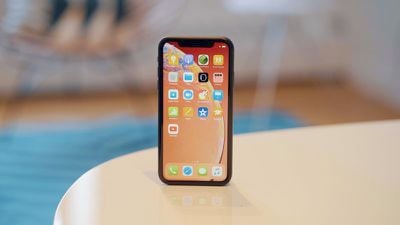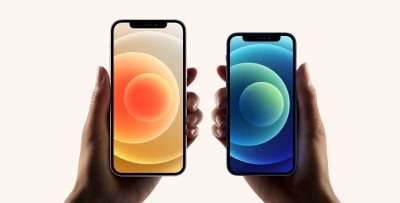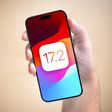The third-generation iPhone SE and the iPhone 11 are Apple's lowest-cost iPhone options, starting at $429 and $499 respectively. Apple released the iPhone 11 in late 2019, and has bumped it down in price since then to make it more accessible as new iPhone models have been released, discontinuing it later in 2022. On the other hand, the third-generation iPhone SE launched in early 2022, refreshing the most affordable iPhone option in the lineup.

With just $70 between them, should you get the new, smaller, entry-level iPhone or the older, larger, standard model that has come down in price over the years? Our guide helps to answer the question of how to decide which of these two iPhones is best for you.
Comparing the iPhone SE 3 and the iPhone 11
The third-generation iPhone SE and iPhone 11 share a number of features, such as a Retina HD LCD display, a 12MP rear Wide camera, a polished glass back, and Qi wireless charging. Apple lists these identical features of the iPhone SE and iPhone 11:
Similarities
- Retina HD LCD display with 326 ppi, IPS technology, True Tone, P3 Wide Color, Haptic Touch, and up to 625 nits brightness
- A-series chip with six-core CPU, including two performance cores and four efficiency cores, and a four-core GPU
- 4GB of memory
- Wi‑Fi 6 and Bluetooth 5.0
- Dual SIM (nano-SIM and eSIM)
- 12MP rear wide camera with ƒ/1.8 aperture, optical image stabilization, digital zoom up to 5x, True Tone flash with Slow Sync, Deep Fusion, Portrait mode, Portrait Lighting, and Smart HDR for photos
- 4K video recording at up to 60fps, optical image stabilization, QuickTake video, slo-mo video support for 1080p at 120fps or 240fps, time-lapse video with stabilization, and stereo recording
- Front-facing camera with ƒ/2.2 aperture, Retina Flash, HDR, Portrait mode, Portrait Lighting, 1080p HD video recording at up to 60fps, Cinematic video stabilization, and QuickTake video
- Supports Dolby Vision, HDR10, and HLG video playback
- Three-axis gyro, accelerometer, proximity sensor, ambient light sensor, and barometer
- Glass front and back
- Aerospace-grade aluminum
- Water resistance
- Lightning port
- Qi wireless charging
- Up to 50 percent charge in 30 minutes
Apple's breakdown shows that the iPhones share a large number of notable features, but there are still meaningful differences between the iPhone SE and iPhone 11, such as their display sizes, authentication technologies, and chips.
Differences
iPhone SE
- Smaller form factor, weighs 144 grams
- 4.7-inch Retina HD display
- Home Button with Touch ID
- A15 Bionic chip with 16-core Neural Engine
- 5G connectivity
- Single rear camera (Wide)
- Photographic Styles
- Smart HDR 4 for photos
- Front-facing 7MP FaceTime HD camera with 1080p HD video recording and Smart HDR 4
- Battery life with up to 15 hours video playback
- Rated IP67 water-resistant to a depth of one meter for up to 30 minutes
- Stronger glass
- Midnight, Starlight, and PRODUCT(RED) color options
- 64GB, 128GB, and 256GB storage options
iPhone 11
- Larger form factor, weighs 194 grams
- 6.1-inch Liquid Retina HD display
- Face ID
- A13 Bionic chip with 8-core Neural Engine
- 4G connectivity
- Dual rear cameras with two-times optical zoom range (Wide and Ultra Wide)
- Night mode
- Next-generation Smart HDR for photos
- Audio zoom
- Front-facing 12MP TrueDepth camera with 4K video recording, next-generation Smart HDR, slo-mo video support, Animoji, and Memoji
- Battery life with up to 17 hours video playback
- Rated IP68 water-resistant to a depth of two meters for up to 30 minutes
- U1 Ultra Wideband chip for spatial awareness
- Supports Dolby Atmos audio playback
- Purple, Yellow, Green, Black, White, and PRODUCT(RED) color options
- 64GB and 128GB storage options
Read on for a closer look at each of these aspects, and see what exactly both low-cost iPhones have to offer.
Design and Colors
The design and form factors of the iPhone SE and iPhone 11 differ significantly. Although both devices share rounded edges, use aerospace-grade aluminum, and have glass backs, the iPhone SE has thick borders along the top and bottom of the display, as well as a Home Button. The iPhone 11 features an all-screen design with no Home Button, with a TrueDepth camera array cutout at the top of the display.

The design of the iPhone SE is the same as the iPhone 8, which shared a similar design to older devices like the iPhone 6, iPhone 6S, and iPhone 7. The iPhone 11 has a more modern design owing to its all-screen look, a "notch" out of the top of the display, and no Home Button. If you like the older style of iPhone with a Home Button or simply prefer a smaller device, you will want to buy the iPhone SE, but most users are likely to prefer the more current design of the iPhone 11.

The iPhone 11 is taller and wider than the iPhone SE, and is 35 percent heavier, so for the most pocketable and lightweight iPhone that is also easier to use with one hand, the iPhone SE will be a better choice.
Apple says that the iPhone SE has the same toughened glass on the front and back as the back of the iPhone 13 and iPhone 13 Pro, resulting in overall improved durability. The iPhone 11 does not have this stronger glass, so the iPhone SE is likely to withstand impacts much better.

The iPhone SE is available in Midnight, Starlight, and PRODUCT(RED), while the iPhone 11 is available in Purple, Yellow, Green, Black, White, and PRODUCT(RED).
Display
Both devices feature a Retina HD LCD display with 326 ppi, IPS technology, True Tone, P3 Wide Color, Haptic Touch, and up to 625 nits brightness, but the display of the iPhone 11 is considerably larger. The iPhone SE's display is 4.7-inches, while the iPhone 11's display is 6.1-inches.

For the likes of consuming media, reading, and playing games, the additional 1.4-inches of screen space may offer a better experience, although it may be slightly more unwieldy in the hand.

Touch ID vs. Face ID
Another major area of difference between the two devices is authentication technology. The iPhone SE features a Touch ID scanner built into the Home Button below the display, while the iPhone 11 features Face ID like all of Apple's more premium iPhones.

Face ID debuted on the iPhone X in 2017. At the time, Apple said the probability that a random person could unlock someone else's iPhone X was approximately one in 1,000,000, versus one in 50,000 for Touch ID. That being said, both forms of authentication are quite safe.
Face ID does not work perfectly with masks, even though there have been some improvements in this area, while Touch ID does not work well with wet or sweaty fingertips, so neither system is perfect. Since the new iPhone SE lacks Face ID, it does not support Animoji or Memoji. Which authentication system you prefer is ultimately up to you.
A13 Bionic vs. A15 Bionic
The iPhone SE's A15 Bionic is the same chip from the iPhone 13, offering significantly better performance and efficiency than the A13 Bionic in the iPhone 11. The A13 is several years old at this point, while the A15 is found in Apple's high-end iPhone 13 Pro models and the iPad mini.

The iPhone SE's A15 is clocked at 3.2GHz, while the iPhone 11's A13 is clocked at 2.7GHz. In single-core, the A15 achieves Geekbench scores of around 1,700, compared to the A13's 1,300. In multi-core, the A15 achieves scores of around 4650, compared to the A13's 3,050. Users can therefore expect moderate performance improvements with the A15, and it is also likely to offer better longevity in the years ahead compared to the A13 due to its age.
Cellular Connectivity
The iPhone SE has sub-6GHz 5G connectivity, while the iPhone 11 cannot use the latest 5G networks. Your ability to take advantage of 5G networks will depend on your service provider and data plan, but at minimum, 5G connectivity makes the iPhone SE a more future-proof device.
Cameras
Both devices feature a 12MP rear wide camera with an ƒ/1.8 aperture, 4K video recording capability, optical image stabilization, and True Tone flash with Slow Sync, with computational photography capabilities including Deep Fusion, Portrait mode, Portrait Lighting, and Smart HDR.
Rear Cameras
The iPhone 11 has two rear cameras, offering a Wide and an Ultra Wide lens. The iPhone SE has a single, Wide camera on the rear. The Ultra Wide camera gives the iPhone 11 a two-times optical zoom range. The iPhone 11 can also take high-quality photos in low-light environments using Night mode.

The iPhone SE offers Photographic Styles and a newer version Smart HDR, and while it has Portrait mode, the feature only works for people rather than any subject, such as animals or plants. Although the video recording capability of both devices is the same, the iPhone 11 can use a feature called Audio zoom to isolate sound when shooting zoomed-in video.
If you are hoping to take a large number of photos and videos, you may prefer the added camera capabilities of the iPhone 11, but the iPhone SE still has a high-quality camera that is adequate for most people's use-cases. Indeed, the iPhone SE has better Smart HDR and offer Photographic Styles, so it comes down to which specific camera features you value the most.

Front-Facing Cameras
Both the iPhone SE and iPhone 11 have a front-facing camera with ƒ/2.2 aperture, Retina Flash, HDR, Portrait mode, Portrait Lighting, 1080p HD video recording at up to 60fps, Cinematic video stabilization, and QuickTake video.
The iPhone SE has a 7MP FaceTime HD front-facing camera that can record 1080p video, but the iPhone 11 has a much better 12MP TrueDepth front-facing camera that can record 4K video and slo-mo, and it also supports Animoji and Memoji. If you use the front-facing camera a lot, such as for selfies or video calls, the iPhone 11's considerably better front-facing camera will be worth getting over the iPhone SE.
Battery Life
When playing back video, the iPhone SE can deliver up to 15 hours of battery life, while the iPhone 11 can deliver up to 17 hours. When it comes to streaming video, this translates to 10 hours of battery life for both devices. When playing back audio, the iPhone SE can deliver up to 50 hours of battery life, but the iPhone 11 can deliver up to 65 hours.
The battery life of both devices should still be good enough for normal daily usage, but if you often find yourself draining your battery prematurely, you may benefit from the iPhone 11's added battery life.
Other Features
Both of these devices feature water resistance for up to 30 minutes, but the iPhone SE has an IP67 rating for water up to one meter deep, while the iPhone 11 has an IP68 rating for water up to two meters deep. This is unlikely to be a relevant consideration for most users, but the iPhone 11 is clearly more durable for those who regularly use their iPhone around water.

Moreover, the iPhone 11 features the U1 Ultra Wideband chip for spatial awareness, which allows it to track AirTags or work as a digital car key. The iPhone 11 also supports Dolby Atmos audio playback through its built-in speakers, but the quality is unlikely to be good enough to notice much difference compared to the iPhone SE. These features are not essential so it is up to you if you feel you would get use out of them.
Other iPhone Options
The iPhone SE and iPhone 11 are the cheapest iPhone options Apple currently sells at $429 and $499, but if you are looking for a more recent device with newer features, there is also the iPhone 12 mini, which starts at $599, and the iPhone 12, which starts at $699.

If getting a smaller iPhone is your priority, and that is why you are considering the iPhone SE, the iPhone 12 mini is physically smaller but has a larger 5.4-inch display and much better technical specifications. The iPhone 12, on the other hand, has the same 6.1-inch display as the iPhone 11, but is slightly smaller owing to slimmer bezels and flat edges.
The iPhone 12 models feature a more modern squared-off design that is thinner and lighter, OLED displays with HDR, the A14 chip, Ceramic Shield front glass, MagSafe, and improved cameras, making for a noticeable improvement over the iPhone 11 if you can afford it.
Final Thoughts
Overall, the iPhone SE is an excellent entry-level iPhone option for just $429. In many respects, the iPhone SE is better than the iPhone 11 since it is a much newer device, featuring a faster and more efficient chip, 5G connectivity, Photographic Styles, Smart HDR 4, and a larger 256GB storage option.
For just $70 more, the iPhone 11 offers a more modern design, a larger display, Face ID, an Ultra Wide camera, Night mode, a considerably better front-facing camera, and longer battery life. There is also the benefit of improved water resistance, the U1 chip, and Dolby Atmos audio playback, and even additional color options to choose from. All of this makes for a fairly significant upgrade over the iPhone SE if you value these features and can afford the $70 extra.

That being said, the main drawback of buying the iPhone 11 is its age. Released in late 2019, the iPhone 11 has a much older and less powerful chip, and lacks some more modern features like 5G connectivity. Overall, it comes down to whether you value having a newer device with more of the latest specifications, or can look past this to get the benefits of a device with a larger display and Face ID.
If you prefer the iPhone 11's unique set of features, then it is still a good option for $499, but generally most users looking for an affordable iPhone should opt for the iPhone SE since it is much more future-proof with modern features like the A15 chip and 5G connectivity.























Top Rated Comments
Today...that is still the obvious choice.
* If you want a small phone, iPhone SE 3 ($429). If you can, spend $170 more for iPhone 12 mini (bigger screen, OLED. Face ID with mask, MagSafe, better cameras, mmWave 5G).
* If you want a bigger screen, spend $70 more for iPhone 11. If you can, spend $200 more still for iPhone 12 (OLED, Face ID with mask, smaller physical size, MagSafe, and better cameras, 5G).